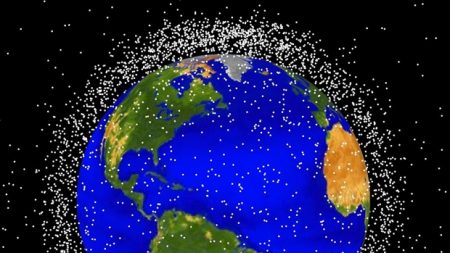December 12, 2016 – The Electrodynamic Tether (EDT) has just been sent into orbit by JAXA, the Japanese space agency. On the JAXA website it refers to EDT and its purpose as a system “to deorbit….debris objects at low cost.” In other words, a way of getting rid of tens of thousands of objects we humans have put into Earth orbit since the beginning of the space age in 1957.
The EDT was launched as part of a cargo payload (HTV) delivering 5.9 metric tons of supplies to the International Space Station (ISS). JAXA, the Japanese contributor to ISS is one of many contracted to deliver supplies to the space station. The current payload includes 600 liters (106 gallons) of water, six lithium-ion battery packs to replace aging nickel-hydrogen batteries, and the Kounotori Integrated Tether Experiment (KITE) which includes EDT.
What is the EDT? It consists of a 20 kilogram (44 pound) weight attached to a spool-able 700 meter (2,300 foot) metallic tether. The idea of the upcoming 7-day experiment is to take the empty HTV and move it away from the ISS, then release the weight and rollout the tether to its full length. As it orbits the tether will pass through the Earth’s magnetic field and pick up electrical charge (see infographic below). The EDT is net-shaped and can withstand impacts from small space debris. With the acquired electromagnetic charge it can then decelerate debris it impacts causing the material to fall out of orbit and burn up in the atmosphere.
Garbage in low-Earth orbit is a growing problem. From time to time detection of debris by Earth-based observation and on board sensors on ISS set off alarms forcing the station to alter orbit to avoid collisions. The amount of material is surprisingly dense and includes well over 1,000 satellites not including dead satellites, spent boosters, and debris from the random collisions of material that has gone astray. There is even an astronaut’s glove floating up there that when traveling at orbital speeds can do a lot of damage if it impacts a satellite or the ISS. Just how much is up there? Best estimates put the number at greater than 20,000 discrete items. That’s why coming up with an effective solution to collect even the small stuff is a good idea.
If the KITE experiment succeeds scientists hope to build a small army of orbiting robotic probes each with even longer tethers and use them to attack space junk, finally cleaning up the garbage in near-Earth space.
The Japanese company that designed the EDT builds knotless nets used for safety barriers at school grounds and sports facilities and for catching fish. But instead of errant fly balls and fish this new product may vault it into the space age where its technology will net pieces of old satellites and other junk orbiting near-Earth space.










